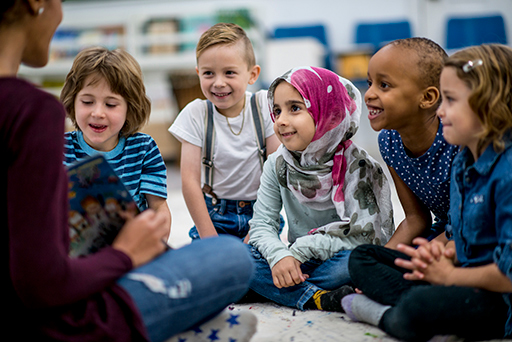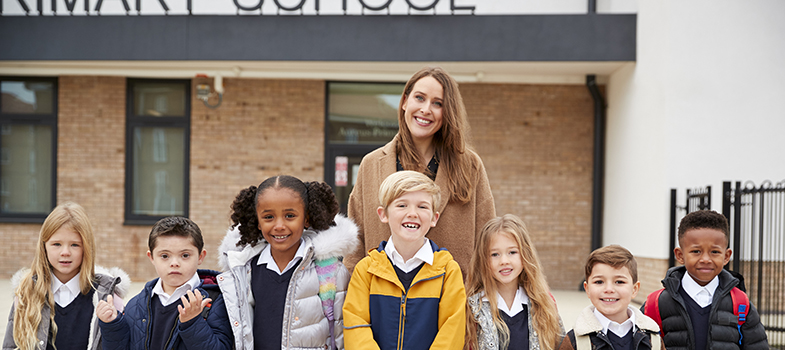1 Knowing what we mean by ‘inclusive education’
There is no doubt that inclusive education is a contested area. Indeed, nationally and internationally, it is the focus of what Daniels has called ‘extraordinary debates concerning definition and ownership’ (Daniels, 2000, p. 1). In this opening section we will look at a range of perspectives on what inclusive education means – drawn from a variety of sources, both ‘official’ and individual. But first let us look at what inclusive education means to you.
Activity 1: Personal experience of inclusion
Think about your own experience of inclusive education, either as a governor, pupil, parent or educational practitioner. You may need to identify who was to be ‘included’ in these situations or definitions. Once you have done this, consider why such inclusion mattered and for whom it was important.
You could then reflect on how your experience of inclusion compares with what you believe inclusion should be about.
Record your thoughts in a blog on the course website. [Tip: hold Ctrl and click a link to open it in a new tab. (Hide tip)]
The perspectives that follow come from a range of viewpoints: disabled activists, professionals working with children, government documents and a campaigning organisation. As you read them, compare these views with your own.
The Equity Group is based in Scotland, and describes itself as ‘a group of disabled people, parents of disabled children and other interested supporters’:
Fundamentally, we believe that inclusive education is about recognising children as having equal rights and being of equal value. This should be a basic starting-point for educational and social policy in a modern society.
Chris Darlington is president of the National Association for Special Educational Needs (NASEN), a national organisation for professionals working in the area of inclusion. He defines inclusion as:
a process, not a state … inclusion is not a simple concept restricted to issues of placement. … Key principles are valuing diversity, entitlement, dignity, individual needs, planning, collective responsibility, professional development, and equal opportunities.
Simone Aspis, who describes herself as ‘a special school survivor’ offers the following definition:
Inclusive education should create opportunities for all learners to work together. This requires a recognition that learning is enhanced when individuals of different abilities, skills and aspirations can work together in a joint enterprise.
The next quote comes from Inclusive Schooling (DfES, 2001b), the official document issued by the Department for Education and Skills (DfES) following changes in the law in 2001 which strengthened students’ rights to a mainstream placement:
Schools supported by local education authorities and others should actively seek to remove the barriers to learning and participation that can hinder or exclude pupils with special educational needs.
The Centre for Studies on Inclusive Education (CSIE) is a campaigning organisation promoting the growth of inclusive schools:
Inclusion means enabling all students to participate fully in the life and work of mainstream settings, whatever their needs. …
Inclusion may also be seen as a continuing process of breaking down barriers to learning and participation for all children and young people. Segregation, on the other hand, is a recurring tendency to exclude difference.
You may also want to consult the Welsh Government’s Inclusion and Pupil Support guidance. This includes guidance on providing inclusive education and developing school attendance and behaviour policies.

You may have noticed that the different definitions have much in common, but they also vary. For example, you may have noted that the DfES’s description focuses on ‘special educational needs’, while the other perspectives view inclusive education as going well beyond one particular group of learners.
Although the word ‘inclusion’ now appears regularly in government documents, no ‘official’ definition of it exists and, in the United Kingdom (as in the United States), the terms ‘inclusion’, ‘inclusive education’, ‘integration’ or ‘mainstreaming’, do not appear anywhere in primary legislation. Consequently, when government documents, academics, parents and activists speak of ‘inclusion’ or ‘inclusive education’, they may appear to be using the same term while what they mean may not be the same at all.
Activity 2: What does inclusion mean to you?
Re-read the definitions above, compare them with your own ideas and your school’s inclusion policy, then note down your own definition of ‘inclusive education’. You may want to consider:
- Who is being included?
- What key words would you include in your definition?
- Does this differ from the experiences of inclusion that you have encountered or read about?
- How does your school’s inclusion policy compare to the definitions above?
Comment
Here are some of the ideas we had in response to this activity. You will notice that a number of them extend significantly the definitions that open this section:
Inclusive education goes beyond ‘special educational needs’: it refers to all learners who, for different reasons, may find themselves at risk of marginalisation or exclusion.
Inclusive education is about values: it assumes that diverse groups of pupils are of equal worth and have a right to be included.
Inclusive education does not focus on perceived individual deficits, but on the barriers to learning that individuals and groups of pupils may encounter.
Inclusive education is about changing the system so it is better for all: this includes teachers, students and everyone in the educational institution.
Inclusive education is about participation and learning from each other.
Inclusive education is not a fixed state but an evolving one.
Some of the key words that we noted were: rights, participation, process, values, equality, diversity, and change.
Learning outcomes
